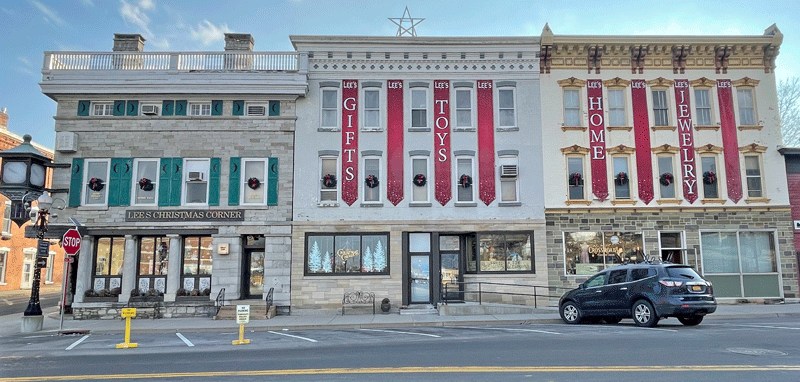 by Sally Colby
by Sally Colby
With high volatility in the agricultural industry, not everyone is willing to start farming from scratch. But that’s what Tom Murray and his wife Nancy did. They borrowed money for their Waterloo, NY farm and bought cattle they could afford. Although they weren’t able to obtain top-quality cows in the beginning, they eventually purchased High-Sights Cleitus Lulu, who became the dam of Muranda Oscar Lucinda — a cow that set the world record for milk production.
That was in 1991, and Murray says that it was Lulu who put Muranda Holsteins on the map. “She was one of a few registered Holsteins,” said Murray, adding that grade cows were purchased to fill the barn. “That triggered the start of our interest in genetic marketing and cow families, and it blossomed from there.”
The Murrays used revenue from early genetic marketing to purchase more cattle, aiming to acquire cattle with deep pedigrees. At a 1998 dispersal sale, the Murrays purchased Beachlawn L Lilly, who became the matron for a significant cow family. Lilly has produced numerous offspring by different bulls that have gone on to produce leading sires, and a Lilly daughter, Muranda BWM Larel, has been the foundation of another outstanding cow family.
Murray says that the overall goal in breeding is to make every mating count, and to produce uniform and correct working cattle. “We select bulls from outstanding cow families that exhibit great type and a great will to milk,” he said. “They’re functional, too.”
The cow herd is housed in a tiestall barn, and have access to pasture during the grazing season. The ration is a home-grown 75 percent high-quality forage. The Murrays work with a custom forage harvester and a nutritionist to ensure a top quality ration for the herd. Son Blane, a Cornell graduate, is the dairy farm manager. Blane has several animals of his own that he’s starting to develop, including one that is the 12th highest type cow in the breed genomically.
“Our main focus is to breed cattle functional cattle with great type and the will to milk under any conditions, whether it be a commercial dairy, a tie stall barn or a grazing operation,” said Murray. “We try to produce cattle that thrive and succeed in all environments. The biggest testament to that is repeat buyers.”
In 2003, when the genetic potential from the Lilly family was at an all-time high, the Murrays held a milking herd dispersal. “We sold our milking herd and kept the young stock,” said Murray. “During that downtime, while we were waiting for those heifers to freshen, I researched how to start a cheese operation. We didn’t think the timing was right because the market wasn’t close enough, but I was wrong.”
Realizing that he couldn’t devote adequate time to both the dairy and a cheese-making venture, Murray selected a cheese maker who could take a large volume of milk and convert it to cheese. “We send him 15,000 pounds of milk each month, which is made into about 1,500 pounds of cheese,” said Murray, who handles aging, packaging marketing and distribution at the farm. Another cheese maker makes blue cheese, a third makes British cheddar and Gouda. The family is currently in the early stages of working with cheese makers to develop several new cheeses.
Murray says that he and Nancy didn’t really understand tourism until they opened their tasting room. “We live on a main road in the middle of wine country, but we didn’t pay much attention until people started stopping here.” Now in their sixth year, the Murrays’ business is growing by 20 percent each year.
One key to drawing customers is the farm’s professionally-designed website. “The website is important,” said Murray. “The more we keep new information in front of people, the more people are driven to the site. We spent about four months with the company, explaining our business, and it’s been amazing to see what a professional company can do for the business.” Rather than having to send information to the web designer, the Murrays can access the website and make up-to-date additions.
Murray manages the tasting room with the help of several part-time employees who help cut, package and serve cheese to guests. Murray says that because guests can see the dairy barn as they arrive, he gets a lot of questions about the cattle. He encourages people to ask questions and is ready to provide answers. “I think it’s so important to inform the public about what’s important,” he said.
Now in their sixth year in the cheese business, the Muranda Farms tasting room is open daily and offers tastings for a fee, which covers everything on the tasting bar. Muranda Farms also distributes cheese to several area wineries within the Finger Lakes Region, and sells to several restaurants. “It’s a win-win situation for the region,” said Murray. “We’ve noticed that it isn’t about us individual — it’s about the region. When people come to the Finger Lakes, they don’t know what town or county they’re in — they just know they’re in the Finger Lakes Region. What’s good for us is good for the whole region.”
Visit Muranda Holsteins and the Muranda Cheese Company at www.muranda.com










Leave A Comment